15 Rare Depression Glass Pieces Worth Adding to Your Collection
For collectors, Depression glass holds a unique charm, with some pieces being particularly difficult to come by. These rare items are not only visually stunning, but they also carry a rich history. Adding one of these pieces to your collection feels like bringing home a piece of history. As your collection grows, you’ll discover how these treasures stand out with their distinct appeal. There’s something thrilling about tracking down a rare find and seeing it become part of your collection.
This post may contain affiliate links, which helps keep this content free. Please read our disclosure for more info.
Cherry Blossom by Jeannette Glass
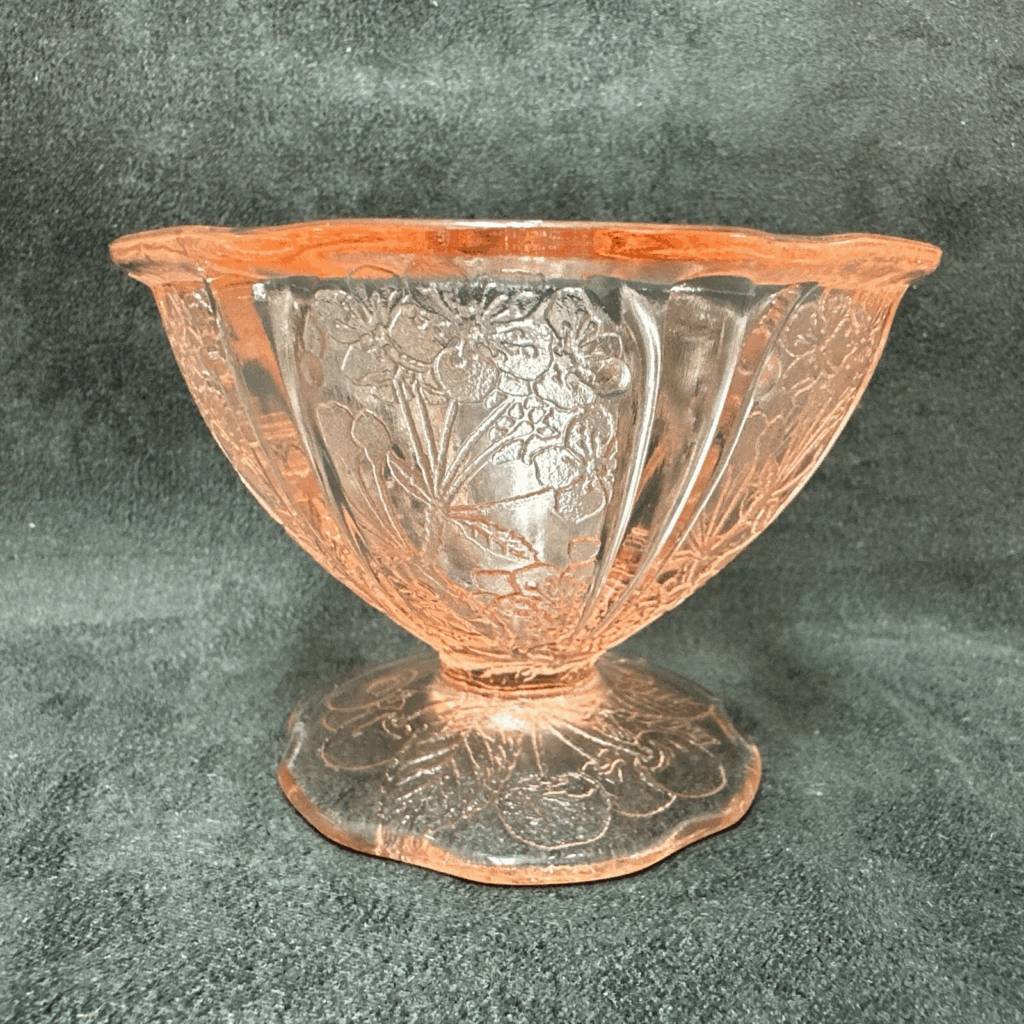
The Cherry Blossom pattern, first introduced in 1930, is one of the most sought-after Depression glass pieces. The pattern features delicate pink flowers surrounded by soft, flowing lines, creating an elegant, feminine design. Its rarity stems from its limited production, which makes well-preserved pieces highly valuable. Collectors are especially drawn to pieces in excellent condition, which can sell for anywhere from $150 to $500. For those who appreciate vintage glassware, owning a piece of Cherry Blossom is like having a slice of Depression-era history.
Cherry Blossom pieces can be found in a variety of colors, but the pink variety is the most highly prized. The subtle pastel hues make it a standout in any collection. The pattern’s beauty, coupled with its rarity, has contributed to its enduring popularity. These pieces are often featured in antique glassware auctions, where collectors compete for the chance to add them to their collections. If you’re looking to invest in Depression glass, Cherry Blossom is an excellent choice.
Aurora by Hazel-Atlas
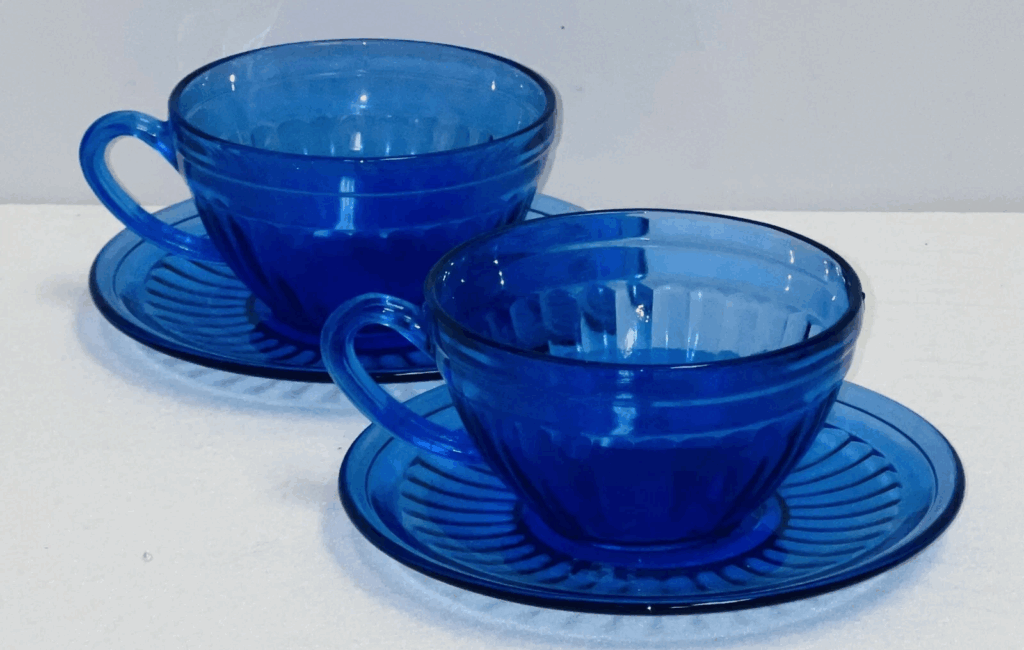
Aurora, a striking Depression glass pattern introduced in 1937, features a sunburst design that reflects light in a dazzling way. This geometric pattern, often found in vibrant colors like cobalt blue and ruby, is considered a rare gem in the world of Depression glass. Its uniqueness comes from both the intricate design and its short production run, which makes it hard to find today. Aurora pieces can range from $200 to $350, depending on the condition and color of the glass. This pattern remains a favorite among collectors because of its timeless elegance.
The clarity and radiant shine of the glass are two of the key attributes that make Aurora so desirable. Each piece catches the light, creating a sparkle that is hard to replicate. Though less common, the ruby and blue variations are the most valuable, commanding higher prices in the market. Collectors often seek out full sets of dinnerware or serving dishes in this pattern to complete their collection. With its history and beauty, Aurora by Hazel-Atlas is a must-have for serious Depression glass collectors.
Hostmaster by New Martinsville
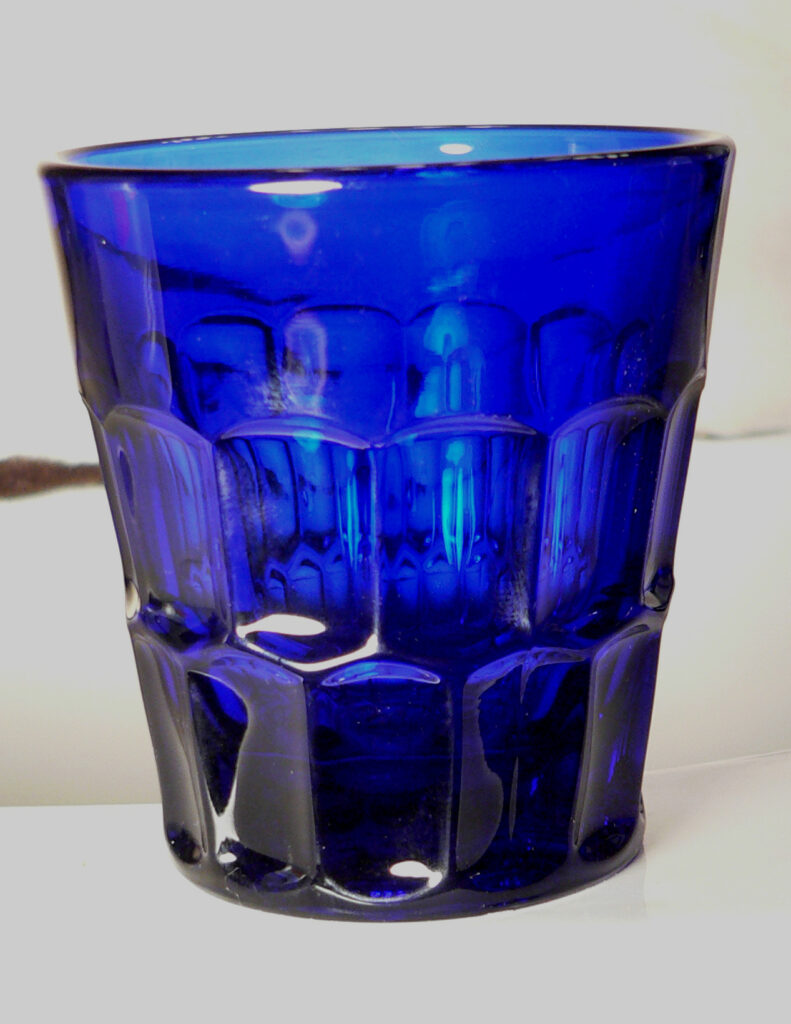
The Hostmaster pattern, produced by New Martinsville in the 1930s, features elegant designs in rich, vibrant colors such as cobalt and ruby. Its smooth, curved lines and beautiful artistry make it one of the most sought-after patterns in Depression glass. Hostmaster was produced in limited quantities, contributing to its rarity today. Depending on condition and color, Hostmaster pieces can fetch prices ranging from $200 to $500. Collectors highly value this pattern for its versatility in both formal and casual settings.
What sets Hostmaster apart from other patterns is its striking color palette and timeless design. The quality of craftsmanship is evident in every piece, from the finely detailed etching to the luminous finish. Because of its rarity, finding a complete set in excellent condition can be a challenge. However, when discovered, these pieces are worth every penny. For those with an eye for elegance, Hostmaster by New Martinsville is an essential addition to any Depression glass collection.
American Sweetheart by MacBeth-Evans
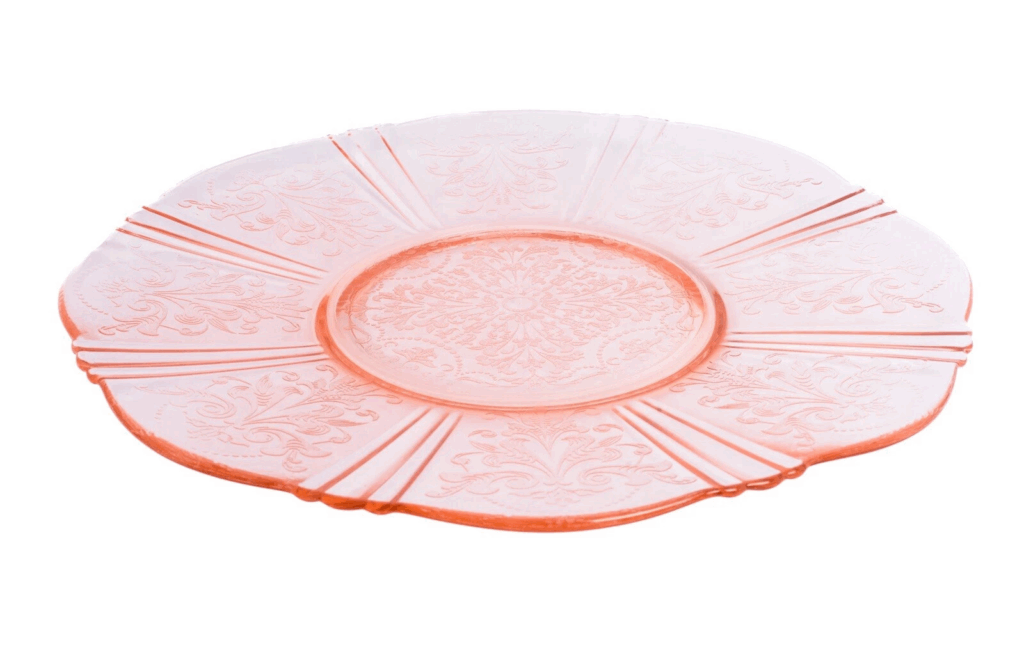
American Sweetheart, produced by MacBeth-Evans from 1930 to 1936, is a stunning pattern known for its floral motifs and soft pastel hues. The design is characterized by delicate swirls and a lacy appearance, giving it a romantic and vintage charm. Pieces in Monax (translucent white) are particularly rare, making them highly sought after by collectors. Prices for American Sweetheart glass can range from $100 to $300, depending on the piece’s condition and rarity. This pattern’s combination of beauty and rarity makes it a valuable addition to any collection.
American Sweetheart pieces are often found in shades of pink, blue, and clear, with the white Monax variety standing out the most. The light, airy design of this glassware adds an understated elegance to any display or dinner table. As one of the more common Depression glass patterns, complete sets can be found at antique stores or auctions, but the more unusual pieces fetch higher prices. Collectors are often drawn to the rich history behind American Sweetheart, which continues to be appreciated for its timeless appeal. Whether you’re a new collector or a seasoned enthusiast, American Sweetheart is a must-have for your collection.
Cameo by Anchor Hocking
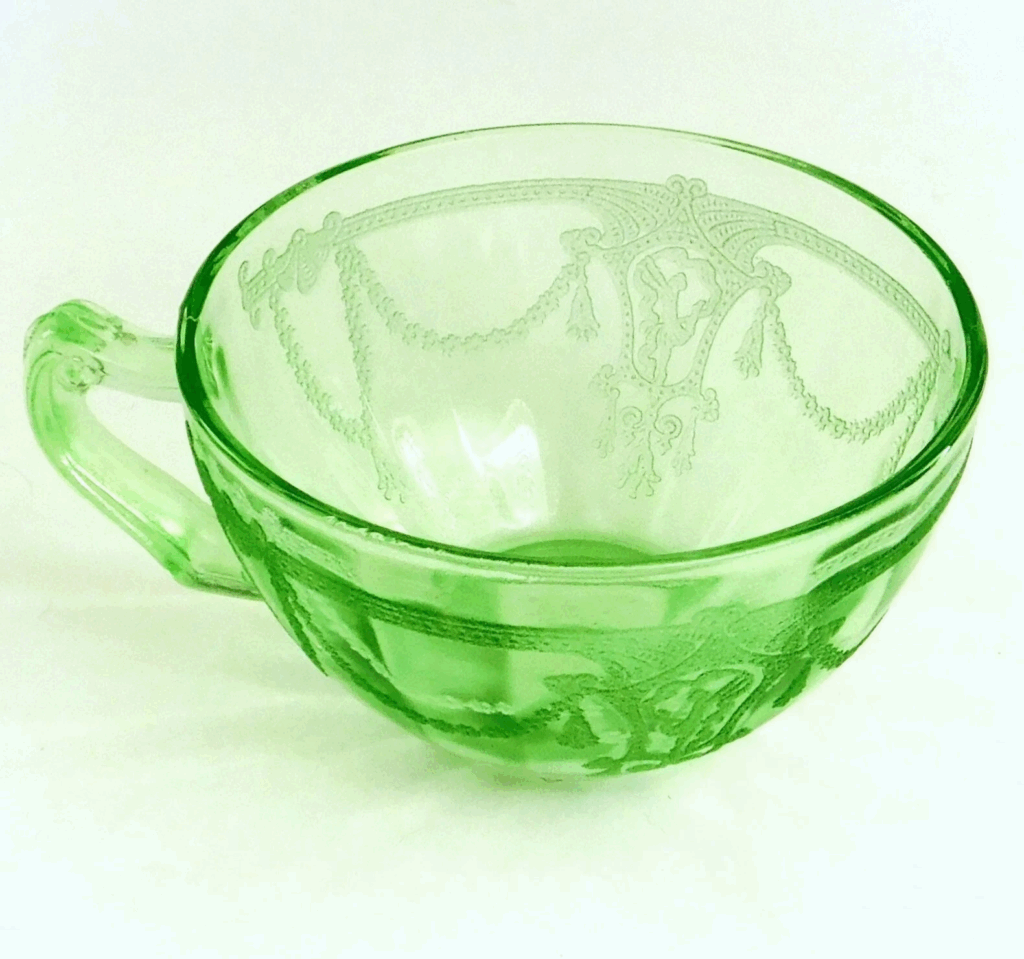
The Cameo pattern, introduced in 1930 and produced by Anchor Hocking, features a raised profile of a woman in classical attire. Known for its graceful design and soft, frosted finish, this pattern became one of the most admired pieces of Depression glass. Cameo pieces are relatively rare, especially in the unique colors of pink and green. Well-maintained pieces can be valued between $150 and $400, depending on the type and condition of the item. The distinctive look and historical value make it a desirable piece for collectors.
Cameo’s popularity stems from its blend of simplicity and elegance. The raised design is finely detailed, and the frosted finish gives the glass a vintage charm that is unmatched. Collectors often seek out serving dishes, bowls, and other rare pieces to add to their collections. The unique coloring of Cameo glass, particularly the green and pink hues, makes it stand out among other Depression glass patterns. Whether displayed as part of a set or as individual pieces, Cameo is a valuable and cherished find in the world of Depression glass.
Royal Lace by Hazel-Atlas
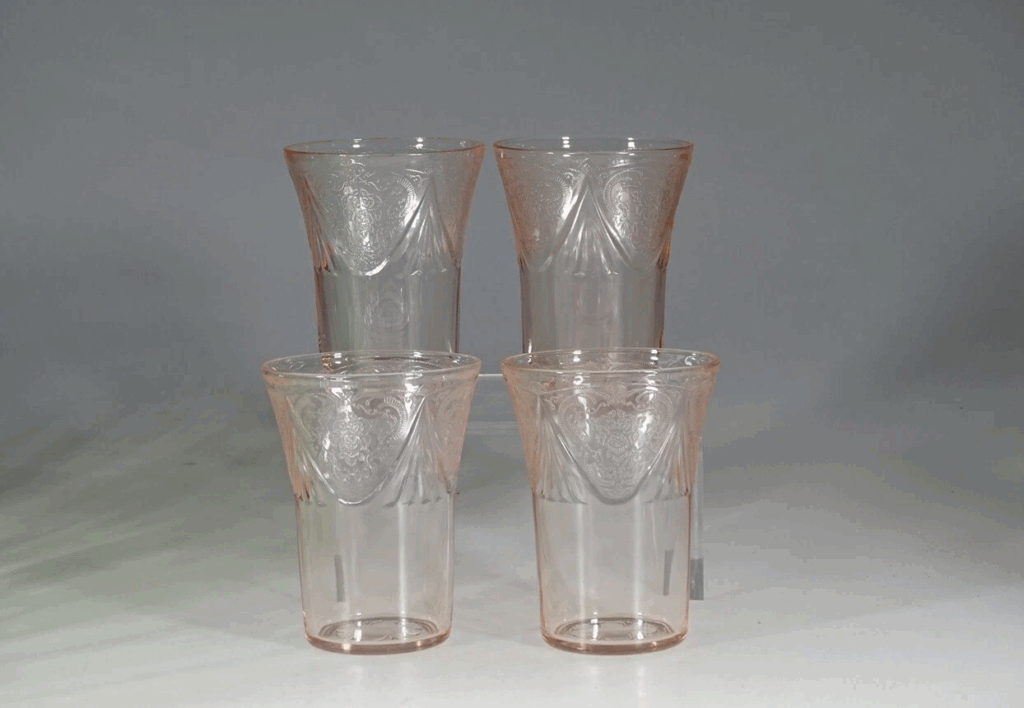
Introduced in 1934, the Royal Lace pattern is characterized by its intricate lace-like design that wraps around the edges of each piece. Produced in clear and colored glass, it quickly became a favorite for Depression glass collectors. Royal Lace was made in limited runs, which makes it harder to find today, especially in pristine condition. Depending on the color and condition, Royal Lace pieces can range from $100 to $350 in value. Its timeless appeal and unique design make it a standout addition to any collection.
The lace design of Royal Lace is what sets it apart from other patterns. It creates a soft, textured effect that is both elegant and understated. The clear glass variant is the most common, but colored pieces in shades like pink and cobalt blue are highly sought after. Many collectors focus on finding rare, complete sets of dinnerware, as well as serving pieces in this pattern. If you’re a Depression glass enthusiast, Royal Lace by Hazel-Atlas is a pattern you won’t want to miss.
Dogwood by MacBeth-Evans
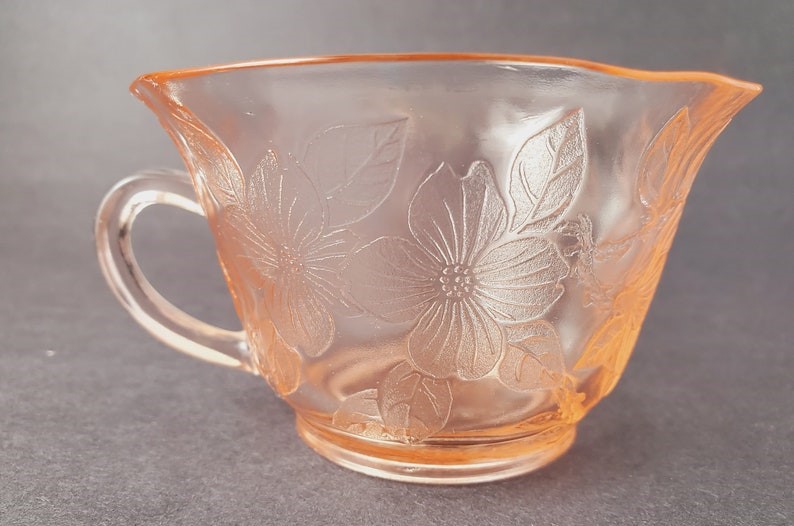
The Dogwood pattern, made from 1930 to 1932, features delicate flowers arranged in a harmonious design. This beautiful, feminine pattern is one of the rarer pieces produced by MacBeth-Evans, which makes it highly valued by collectors today. Dogwood is most commonly found in pink or clear glass, with pieces in blue or green being extremely rare and more expensive. Depending on the piece, Dogwood can fetch prices between $150 and $400. This unique pattern is an ideal find for anyone looking to add rare, high-quality Depression glass to their collection.
The soft, floral motif of Dogwood is one of the defining characteristics of the pattern. Its subtle elegance and fine detailing make it a favorite among collectors who appreciate vintage glassware. Dogwood pieces are often displayed in antique shops and auctions, where enthusiasts search for the more unusual colors. The scarcity of certain colors, combined with the delicate design, has made this pattern one of the more valuable in Depression glass collections. If you’re looking for a timeless piece, Dogwood is a perfect choice.
Petalware by MacBeth-Evans
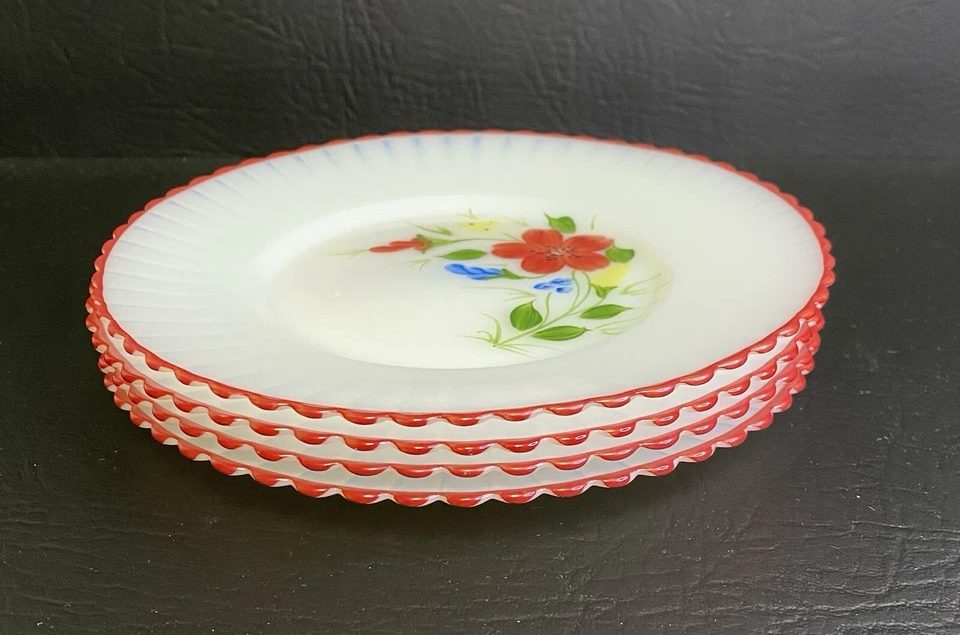
Petalware, produced from the late 1920s to the 1940s, is known for its elegant floral design and soft, pastel colors. This pattern features graceful, raised petal-like shapes around the edges of each piece, giving it a delicate, feminine look. Its long production run means that many pieces are still available today, but complete sets in excellent condition are rare. Petalware’s value ranges from $150 to $350, depending on condition and the rarity of the color. Collectors admire this pattern for both its beauty and the history it represents.
The subtle elegance of Petalware makes it a timeless favorite. While the clear glass pieces are more common, colored variants, such as pink and blue, are much rarer and can command higher prices. Petalware is often sought after by collectors looking to complete a set of dinnerware or to find serving dishes in the pattern. Its delicate design makes it a perfect addition to any vintage collection, whether you’re just starting or expanding your current set. For those who appreciate understated beauty, Petalware is a wonderful addition to any Depression glass collection.
Mayfair by Hocking Glass Company
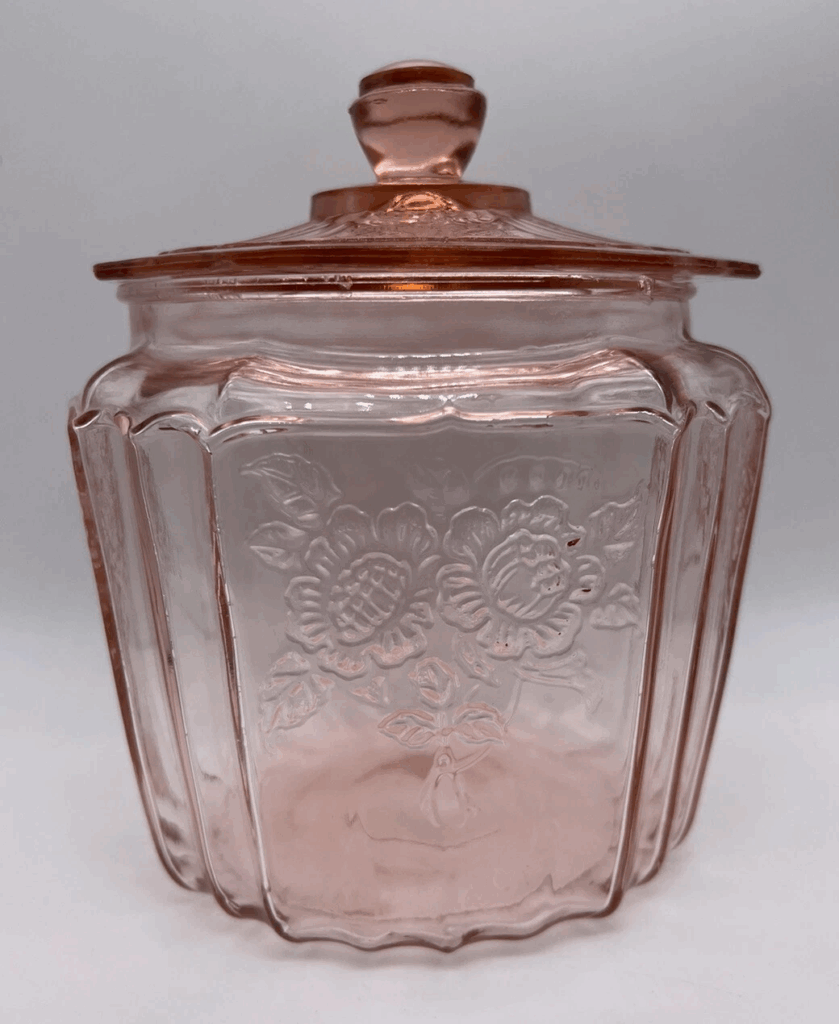
The Mayfair pattern, made from 1931 to 1937, is known for its scalloped edges and elegant floral motifs. Produced in clear, pink, and other colors, Mayfair became popular for its refined, yet simple design. The pink variant is the most common, while the blue pieces are rarer and much more valuable. Prices for Mayfair pieces range from $100 to $300, with the rarer colors fetching a higher price. Its timeless design continues to captivate collectors who appreciate its graceful appearance.
Mayfair’s appeal lies in its beautiful floral design and refined elegance. While it was produced in a variety of colors, the more uncommon colors are especially coveted. Collectors often search for complete sets or unique serving pieces to add to their collections. The ease with which it blends into both modern and vintage settings makes it a desirable pattern. If you’re looking for a versatile and elegant Depression glass pattern, Mayfair is an excellent choice.
Princess by Anchor Hocking
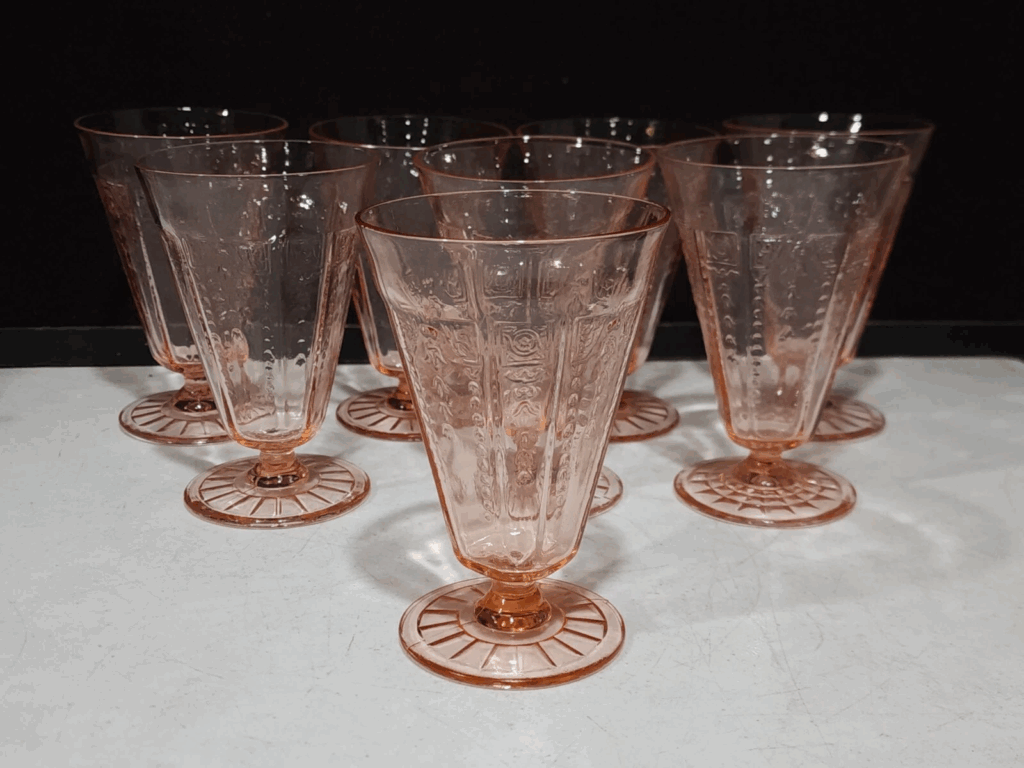
The Princess pattern, made from 1931 to 1934, is known for its geometric design and scalloped edges. This pattern features a series of intersecting circles and square shapes, giving it a modern yet vintage feel. Although green and pink pieces are common, topaz (yellow) variants are much rarer and highly collectible. Princess pieces can range in value from $100 to $400, depending on the color and condition of the glass. Collectors often seek out this pattern for its unique design and subtle elegance.
Princess pieces are often admired for their versatility and beauty. The intricate geometric shapes and flowing lines create a pattern that stands out in any collection. While the more common pink and green pieces are still highly valued, the yellow topaz variety is the most coveted. Princess pieces are often featured in glassware auctions, where their rarity drives up prices. Whether displayed as part of a set or as individual pieces, Princess by Anchor Hocking is a valuable find for any Depression glass collector.
Adam by Jeannette Glass Company
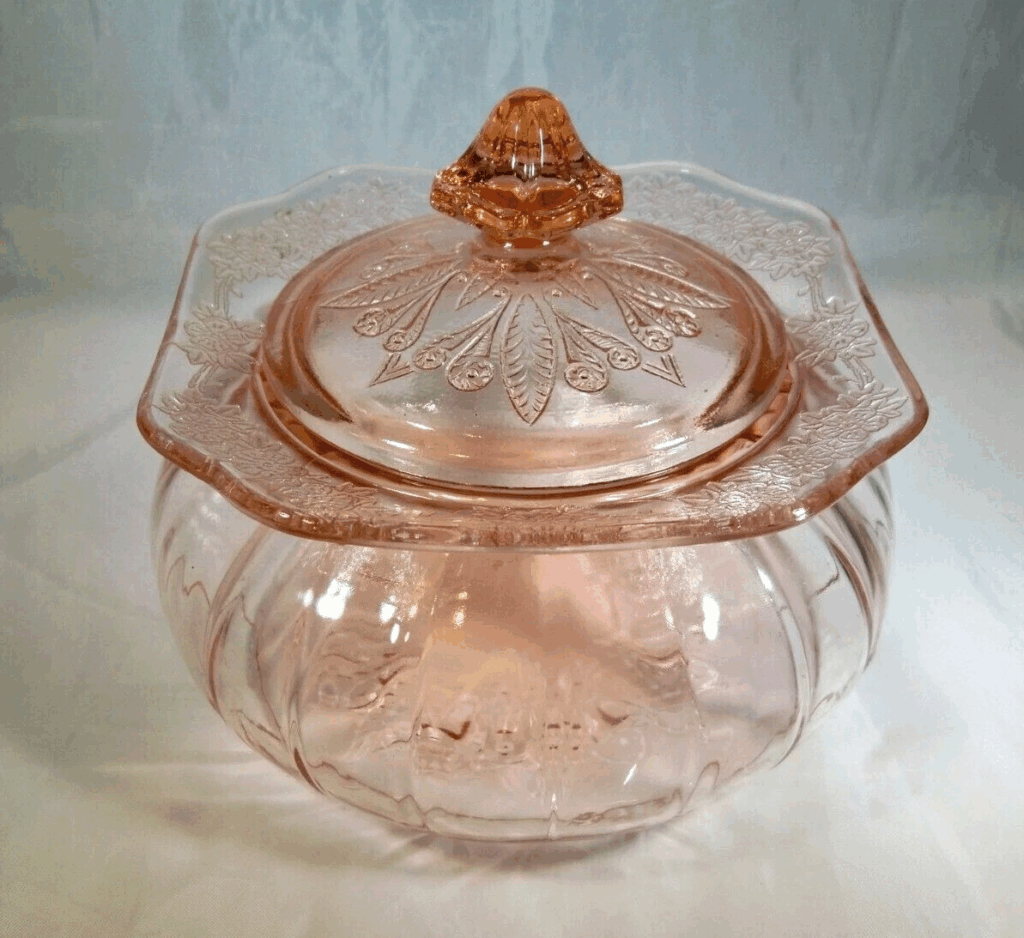
Adam, introduced in 1932, features a floral design with intricate, raised profiles around the edges of each piece. The delicate detail and elegant design make it one of the more sought-after Depression glass patterns. Adam pieces in excellent condition can range in value from $150 to $400. This pattern’s combination of beauty and rarity makes it an ideal addition for collectors who appreciate vintage glassware. The unique design and limited availability have kept this pattern highly coveted by collectors.
What sets Adam apart from other patterns is the detailed floral motif that adorns the edges of each piece. The subtle, soft pink and clear glass variations are the most common, but finding pieces in excellent condition is often challenging. This rarity and the intricate design contribute to Adam’s high value in the market. As a Depression glass enthusiast, adding Adam to your collection would be an excellent choice for its beauty and historical significance. If you’re looking to complete your collection with a true treasure, Adam by Jeannette Glass is a must-have.
Jubilee by Lancaster Glass Company
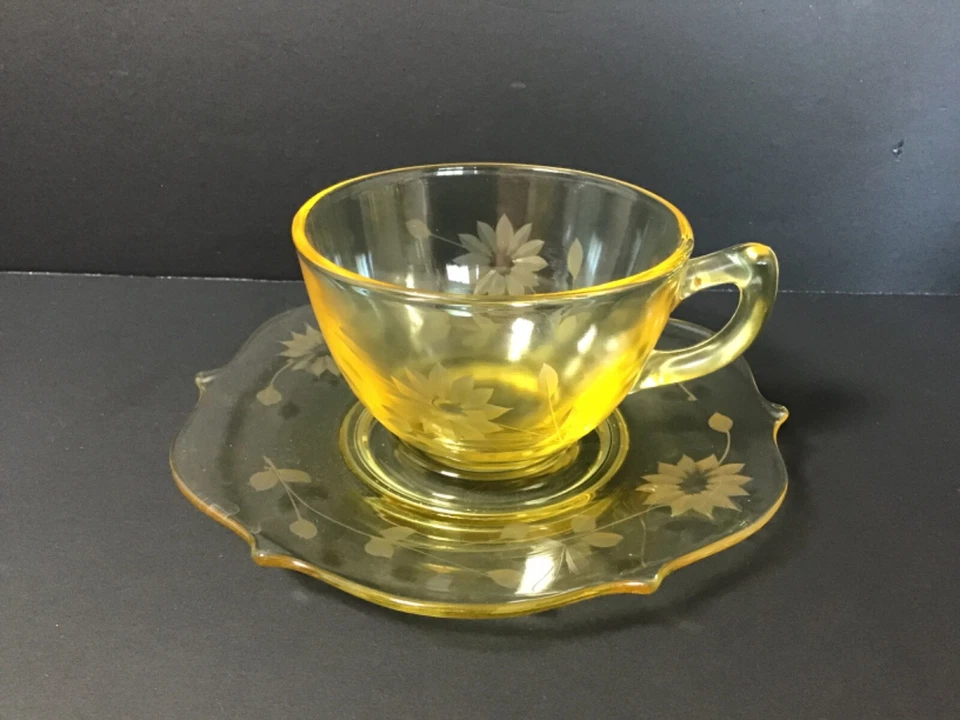
The Jubilee pattern, produced by Lancaster Glass Company, is known for its vibrant colors and intricate design. This pattern was produced during the company’s operation in the 1930s, making it one of the rarer Depression glass pieces. The rich colors and radiant shine of Jubilee make it stand out from other glassware. Depending on condition and color, pieces from this pattern can range from $150 to $500. Collectors often seek out rare colors like green, amber, and cobalt blue for their collections.
Jubilee pieces are highly prized for their radiant color and the unique detailing found in each item. The smooth, flowing design and vibrant colors make it a striking addition to any display. While the clear glass version is the most common, colored pieces are much rarer and command higher prices in the market. As an essential find for collectors, Jubilee offers both beauty and historical significance. Whether you’re an experienced collector or just starting, adding a piece of Jubilee to your collection is always a valuable investment.
Sphinx by Lancaster Glass Company
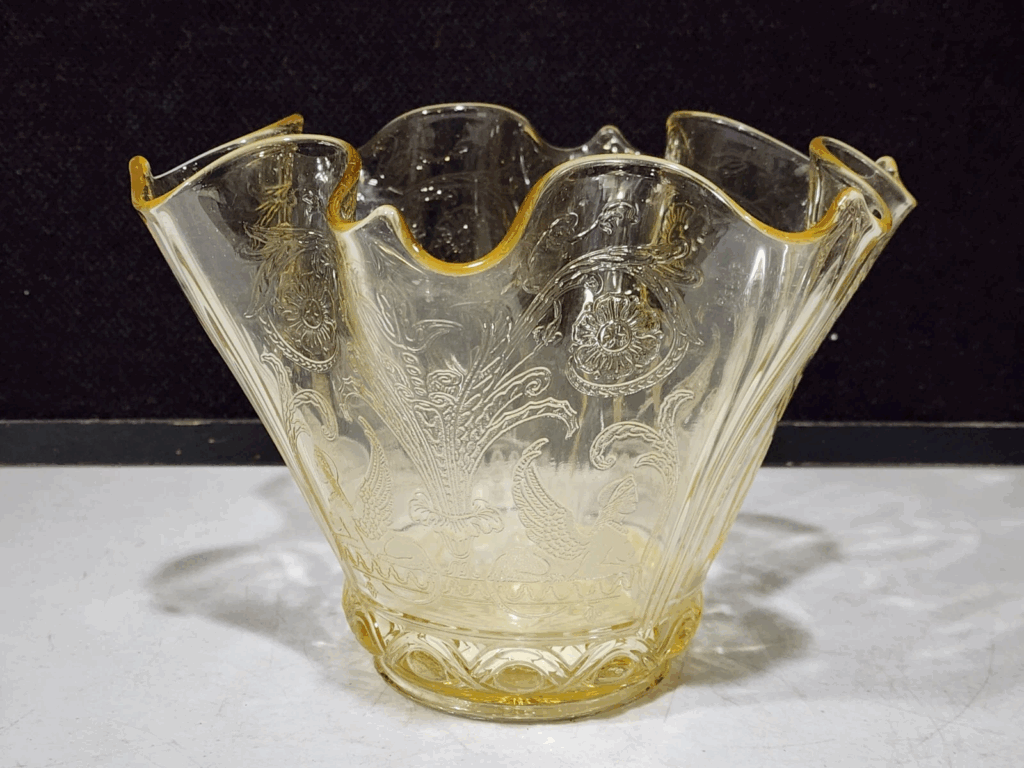
The Sphinx pattern is one of the rarest Depression glass patterns produced by Lancaster Glass Company. This pattern features a distinct, intricate design that makes it stand out from other Depression glassware. Its rarity and unique pattern have made it highly desirable among collectors. Prices for Sphinx pieces can vary widely, but well-preserved items are typically valued between $200 and $600. Its limited production and exceptional design contribute to its status as a sought-after collectible.
Sphinx glass is often admired for its detailed motifs and radiant color, which make each piece unique. The pattern’s distinctive design, which includes stylized Egyptian-inspired imagery, adds a touch of history to any collection. Finding Sphinx glass in good condition is rare, and those who do will enjoy its substantial market value. The elegance of the design combined with the rarity of the pieces has made this pattern a coveted find for glassware collectors. For those looking to add a truly rare Depression glass piece to their collection, Sphinx is an excellent choice.
Morning Glory by Lancaster Glass Company
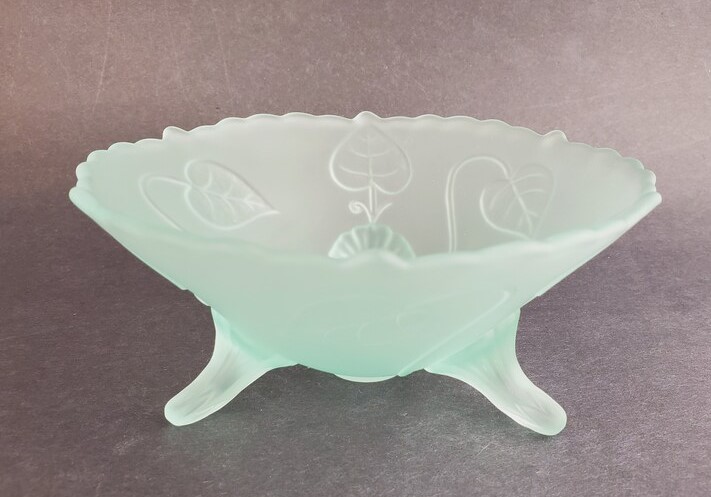
The Morning Glory pattern is known for its vibrant floral design and smooth, elegant finish. Produced by Lancaster Glass Company, this pattern became a favorite among collectors during its production in the 1930s. Due to its intricate design and limited production, pieces in the Morning Glory pattern are highly valued. Prices for Morning Glory glassware typically range from $150 to $400, depending on the piece’s condition. Collectors appreciate the history and beauty that this pattern brings to their collection.
Morning Glory is admired for its detailed floral motifs and soft, pastel colors that give it a delicate, vintage appeal. The pieces in this pattern have a distinct luster, making them stand out in any collection. As a rarer pattern, finding well-maintained Morning Glory pieces can be a challenge, which contributes to their higher value in the market. For collectors who appreciate vintage floral designs, this pattern is a beautiful and valuable addition. Morning Glory by Lancaster Glass is an excellent choice for anyone looking to add a rare, historically rich piece to their collection.
Sunshine by Lancaster Glass Company
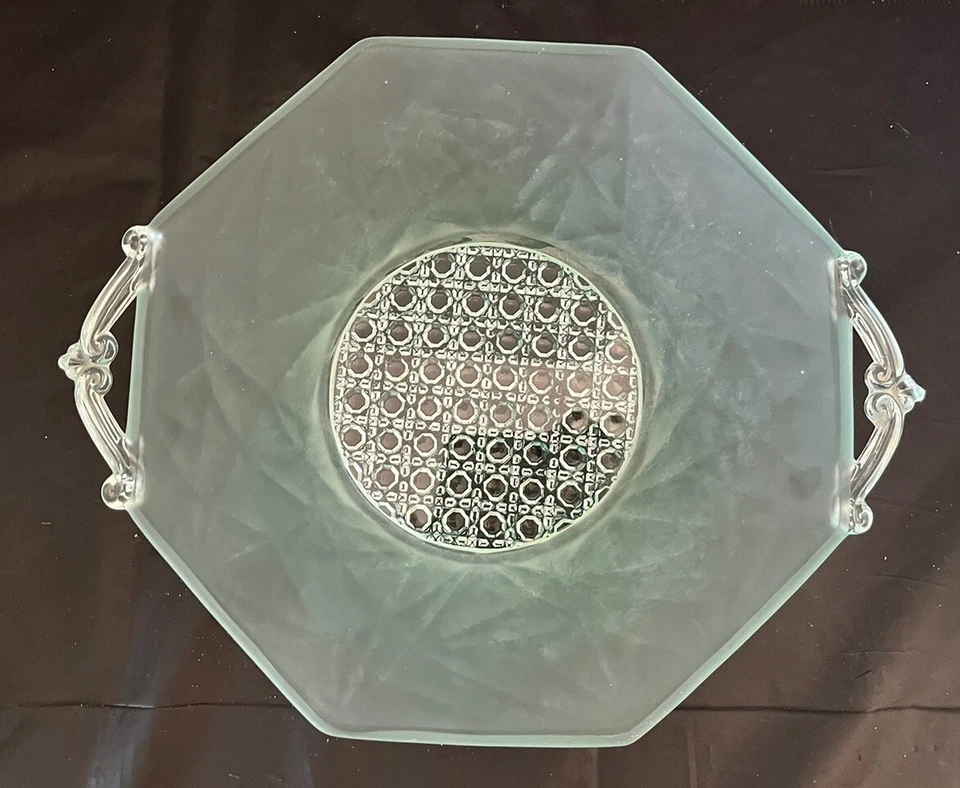
Sunshine is one of the most unique and rare Depression glass patterns produced by Lancaster Glass Company. This pattern features a radiant, sunburst design that sets it apart from other glassware patterns of the era. With its limited production, Sunshine pieces are highly collectible and can be valued between $150 and $500 depending on the color and condition. Its bold design and rich history make it a standout in any collection of Depression glass. Collectors often seek out rare colors, with green and amber being the most highly prized.
Sunshine’s radiant sunburst pattern captures the essence of the Depression glass era, with its intricate design and vibrant colors. The limited production run of this pattern makes it a rare find, and collectors often seek out complete sets for display. The high demand for Sunshine pieces has led to their increasing value over the years. If you’re looking for a Depression glass pattern that offers both beauty and rarity, Sunshine is a top choice. Adding this stunning piece to your collection will bring a touch of vintage elegance to your glassware.
This article originally appeared on Avocadu.
